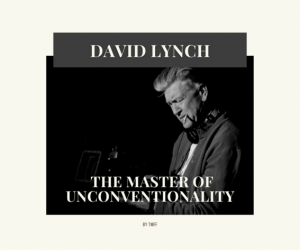Documentaries have been a staple of American cinema since the first—Nanook of the North—debuted in the 1920s. There’s plenty to love about documentaries, particularly their ability to impact society, ranging from changing the mold on a topic to enlightening a subject. Nowadays, the documentary genre has become popular with contemporary filmmaking, with demand surging across streaming platforms. Studios don’t feel as worried about a documentary not doing well at the box office, allowing for the creation of these films on the various streaming platforms available.
So, in this article, let’s discuss the rise of this genre, its impact, its authenticity, and its future. There’s plenty to learn about documentaries, especially if you hope to make a documentary yourself.
Impacting Lives
Documentaries provide a sober view of actual narratives, concerns, and occurrences. In an era saturated with doubt regarding many topics, documentaries emerge as a guiding light of authenticity if done right. They deliver a candid and unembellished perspective of reality, frequently pushing us to reevaluate our assumptions and challenge established norms.
The art of documentary filmmaking has emerged as a potent force in magnifying a myriad of voices and viewpoints. It allows marginalized groups, unheard individuals, and overlooked narratives to resonate with audiences worldwide. From environmental crusaders to champions of social justice, these documentaries illuminate pressing concerns and champion transformative action.
Indeed, documentaries have demonstrated their capacity to ignite societal transformation. Plenty of documentaries have ignited worldwide dialogues and galvanized efforts on climate change and animal welfare. It fosters awareness and galvanizes communities as powerful catalysts for meaningful change.
Creativity
While documentaries maintain their grounding in reality, they have transformed, embracing creative storytelling techniques. Filmmakers skillfully integrate narrative elements, striking visuals, and compelling characters to enthrall and engage audiences, pushing the boundaries of the genre. Furthermore, technological advancements have empowered documentary filmmakers to create immersive experiences. Through mediums like virtual reality (VR), viewers are transported into the heart of the narrative, enabling interaction with the environment and its inhabitants. This immersive approach fosters empathy and intensifies the emotional resonance of the storytelling.
Lastly, prestigious events such as Sundance, Cannes, and the Toronto International Film Festival prominently showcase documentaries, emphasizing their artistic and cultural significance. Many documentaries have received critical acclaim and prestigious awards, solidifying the genre’s position as a potent medium for storytelling.
Curiosity
Nowadays, audiences have become self-sustaining due to their natural curiosity. As viewers gravitated towards documentaries on streaming platforms, they discovered that documentary narratives carry equal or greater emotional weight than fiction films. That emotional impact is significant to why so many people turn to documentaries.
The laughter, the tears, the consequences–they’re all genuine. The individuals on screen aren’t actors who will reappear in another role; they’re real people facing real challenges. This authenticity imbues documentaries with a unique power unlike any other form of storytelling. However, it’s vital to know the difference between well-made non-fiction storytelling and pandering to get an emotional response without a proper story.
The Future
The creativity has guaranteed a stronger future for documentaries. Previously, documentaries were often considered tedious educational tools, with many only utilizing the genre within their schooling framework. However, today, documentary filmmaking has reached its ‘golden’ age. This transformation is attributed to our shift from mere information conveyors to embracing filmmakers’ roles as storytellers and filmmakers. Through filmmaker methods—visuals, sound, and structure—documentarians craft compelling narratives with dramatic arcs.
This shift has led documentaries to resemble nonfiction films more closely than before. Audiences now demand information and entertainment, which is a big difference from the past. Whether it’s a series on the opioid crisis or Tiger King, viewers expect to be informed and engaged.

















